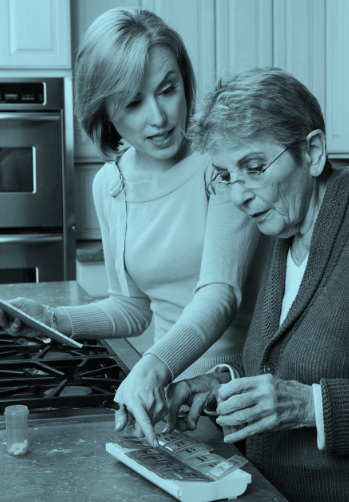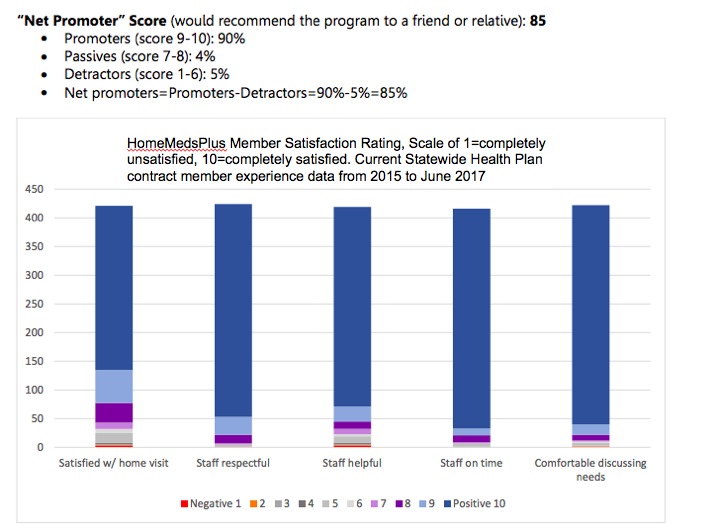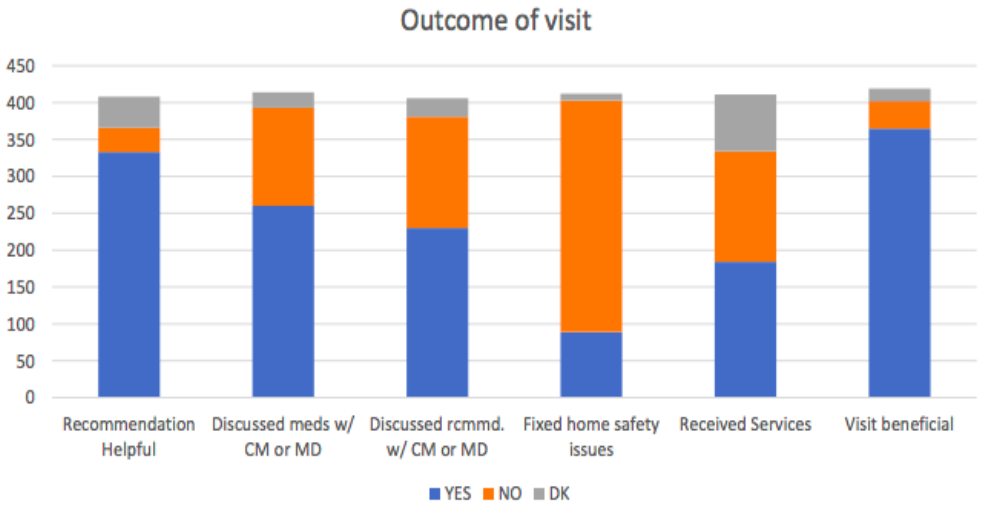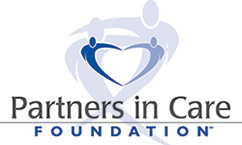Reduce ED And Readmission Costs For High-Risk Patients With Our “Eyes And Ears In The Home” Visit
Value Proposition
WHO? Health plans and medical providers caring for high risk patients recently discharged or with multiple chronic conditions
WHAT? Medication, psychosocial, functional needs and safety assessments performed by highly skilled health coaches competent in cultural and linguistic diversity, adept at patient engagement and knowledgeable of community resources
WHERE? In the home, at ground zero of optimal health outcomes
WHY? Create an individualized service plan in concert with case managers, and review and revise periodically – all to keep patients out of the hospital, maximize your HEDIS quality measures and protect Medicare Advantage Star quality ratings

Three Step Intervention
Step 1: Medication Risk Assessment
- Review all meds being taken, gauge patient understanding of directions for use and side effects
- Record signs and symptoms of adverse effects
- Interview for information on diagnoses, allergies, prescription affordability
- Send identified risks to a pharmacist for review and recommendation
- Pharmacist contacts provider or patient to resolve issues
Step 2: Psychosocial and Environmental Risk Assessment
- Evaluate functional capacity (Activities of Daily Living/Instrumental Activities of Daily Living)
- Record signs and symptoms of adverse effects
- Flag potential fall risks from medications, trip hazards or poor lighting
- Screen for depression (Patient Health Questionnaire 9) and cognitive impairment (Mini Mental Status Exam)
- Assess home safety, cleanliness and maintenance
- Define barriers to compliance with service plan
- Look for evidence of other issues – abuse indicators, alcohol bottles, odors, inadequate or moldy food
Step 3: Service Plan Development
- Identify service and support needs of patient and caregivers
- Flag potential fall risks from medications, trip hazards or poor lighting
- Implement follow-up plan in collaboration with patient, family and case manager
For more information contact Ester Sefilyan: esefilyan@picf.org


Summary of Member Needs: Q4 2020
| Home Safety Needs/ Fall Risk Indicators | Psychological / Cognitive Functioning |
|---|---|
| Falls within the last 6 Months40% | Indication of Mild Depression (PHQ-9)5% |
| Live Alone30% | Indication of Severe Depression (PHQ-9)4% |
| Lives Alone with recent Fall10% | Suicidal thoughts w/in past 2 weeks (PHQ-9)0% |
| Avg. # of Home Safety Equipment Needs (per member)3 | Anxiety25% |
| Grab Bars30% | Feeling Isolated/Lonely20% |
| Bath Bench15% | Indication of Cognitive Impairment (SPMSQ)0% |
| Problems with Memory5% |
| Physical Functioning | Legal / Financial Needs |
|---|---|
| Experiencing Pain70% | Power of Attorney (Financial).20% |
| Medium/High Pain79% | Advance Care Directive60% |
| Physical Impairments: Vision10% | Problematic Expenses5% |
| Physical Impairments: Hearing10% | Power of Attorney (Medical)10% |
| Unplanned Weight Loss/Gain in last 6 Months25% | Conservator0% |
| Avg. # of ADL/IADL Assistance Needs (per member)3% | Medi-Cal35% |
| Transportation 65% | Medicare0% |
| Mobilit20% | VA Benefits0% |
| Social Security0% | |
| SSDI15% | |
| SSI0% |
Outcomes for 250 Post-Acute High-Risk Seniors:
12.8% Lower Rate ED Use
22% Lower Rate of Readmissions
53% ROI Hospital Cost Avoidance
84% Patients Accepted Completed Home Visit
77% Home Safety Issues Identified/Recommendations Made (grab bars, bath chairs, emergency response systems
63% Medication Issues Identified/Pharmacist Recommendation Made
54% Other Risk Factors Identified (depression, caregiving, finances)
*compared to patients who did not receive a home visit

